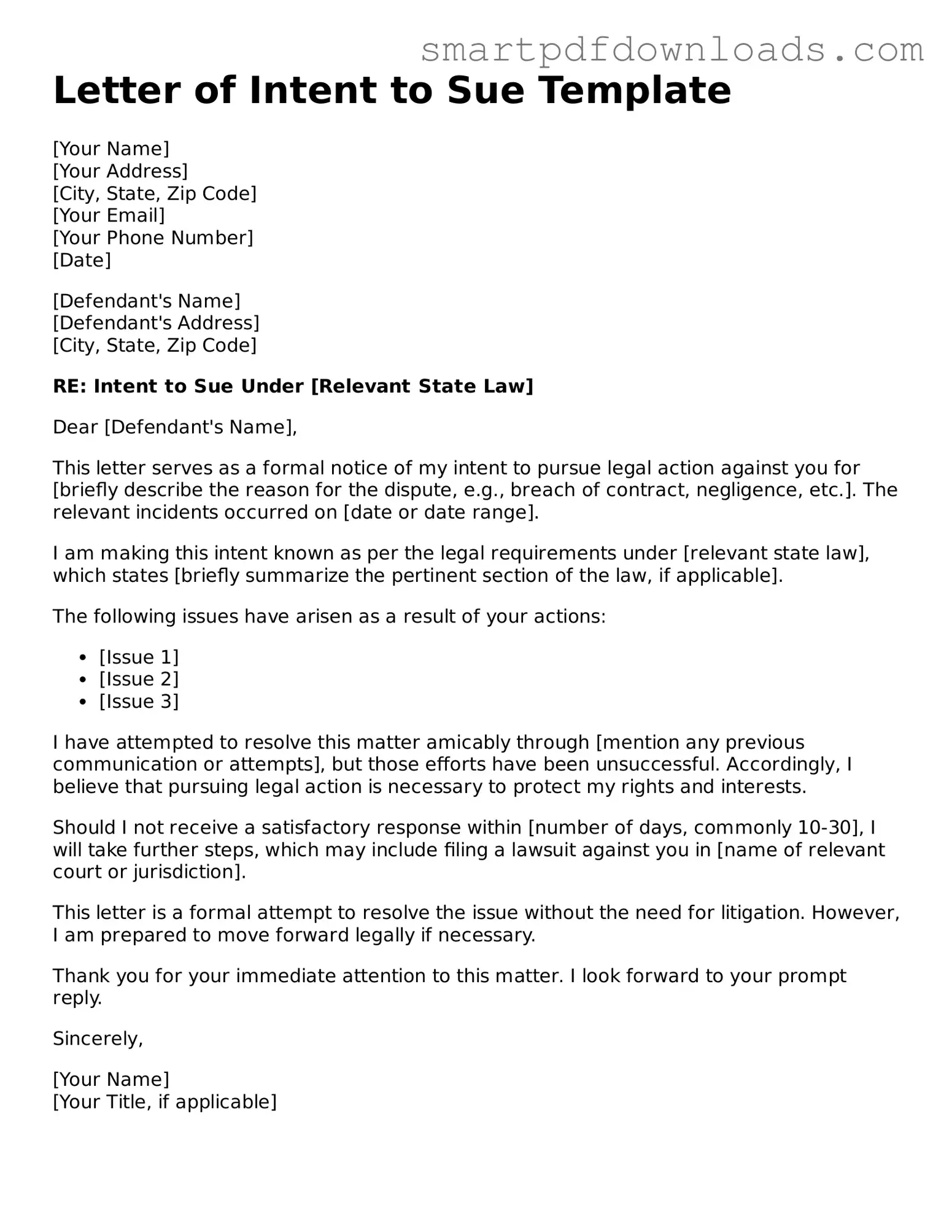Letter of Intent to Sue Template
[Your Name]
[Your Address]
[City, State, Zip Code]
[Your Email]
[Your Phone Number]
[Date]
[Defendant's Name]
[Defendant's Address]
[City, State, Zip Code]
RE: Intent to Sue Under [Relevant State Law]
Dear [Defendant's Name],
This letter serves as a formal notice of my intent to pursue legal action against you for [briefly describe the reason for the dispute, e.g., breach of contract, negligence, etc.]. The relevant incidents occurred on [date or date range].
I am making this intent known as per the legal requirements under [relevant state law], which states [briefly summarize the pertinent section of the law, if applicable].
The following issues have arisen as a result of your actions:
- [Issue 1]
- [Issue 2]
- [Issue 3]
I have attempted to resolve this matter amicably through [mention any previous communication or attempts], but those efforts have been unsuccessful. Accordingly, I believe that pursuing legal action is necessary to protect my rights and interests.
Should I not receive a satisfactory response within [number of days, commonly 10-30], I will take further steps, which may include filing a lawsuit against you in [name of relevant court or jurisdiction].
This letter is a formal attempt to resolve the issue without the need for litigation. However, I am prepared to move forward legally if necessary.
Thank you for your immediate attention to this matter. I look forward to your prompt reply.
Sincerely,
[Your Name]
[Your Title, if applicable]
